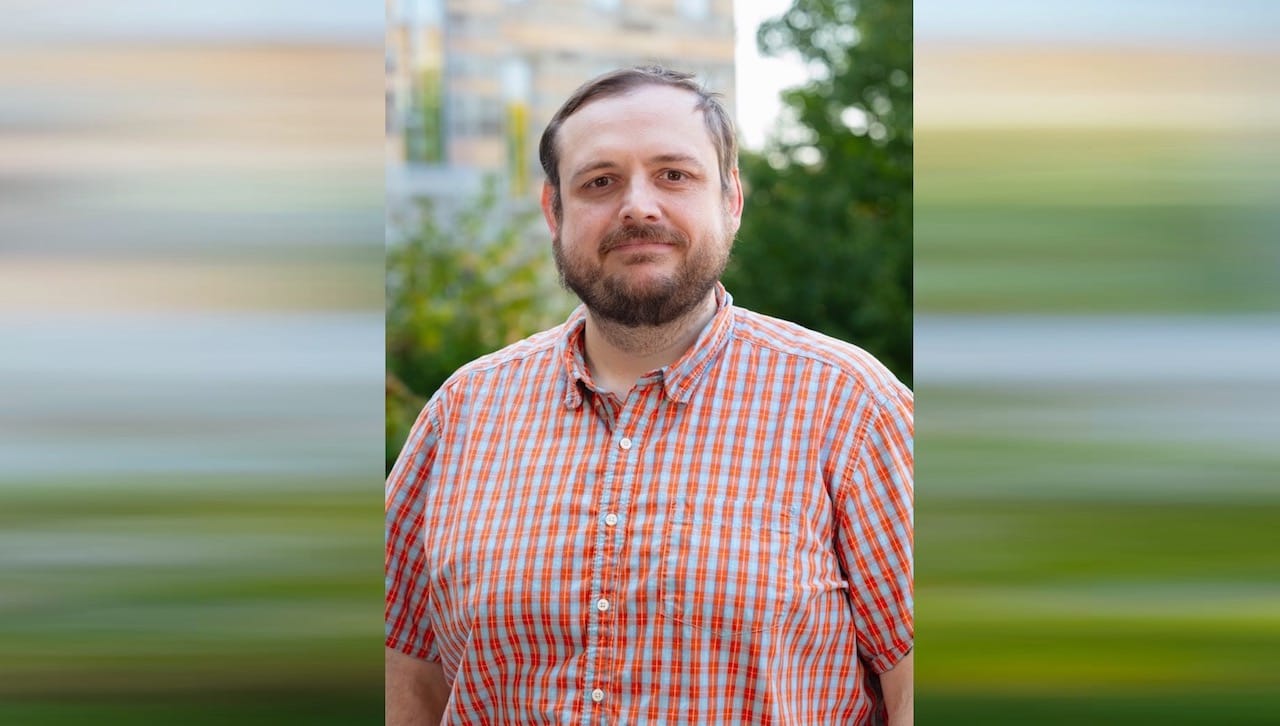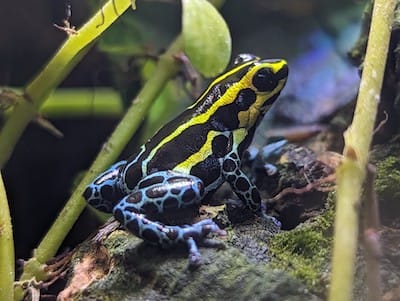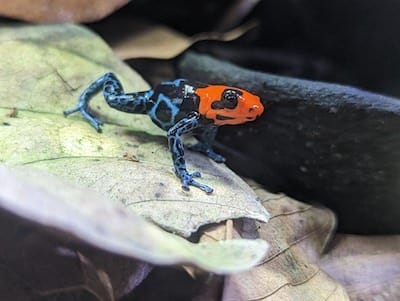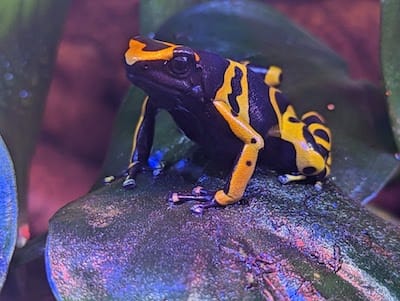Professor Awarded Nearly Half-Million Dollar Grant

Vincent Farallo, Ph.D., assistant professor of biology, was awarded a $488,947 grant from the National Science Foundation (NSF) to research the physiology and chemical ecology of poison frogs. The funding for the three-year project will allow for the participation of 30 or more undergraduate students, who will learn cutting-edge respirometry techniques as they work with faculty members. The study will also allow for the development of a frog breeding colony, which can be used for this – as well as future – research projects.
“Amphibians are especially susceptible to climate change as their physiologies, specifically respiration and other aspects of metabolism, are dependent on specific temperature and moisture conditions,” said Dr. Farallo, explaining that Neotropical poison frogs in the family Dendrobatidae, which will be used for the study, “also have specialized physiologies that allow them to sequester dietary alkaloids to be used as chemical defenses.”
“Poison frogs, many of which are lethal in the wild, are no longer toxic in captivity,” said Dr. Farallo, explaining that their diet in the wild of ants and mites, enables their toxicity through a process called alkaloid sequestration. The frogs’ diet in captivity of fruit flies does not allow for them to maintain poisonous toxicity. The frogs do, however, retain their unique, bright coloring.
The study will allow for controlled levels of alkaloids to be reintroduced to the dendrobatid frogs and then measure how alkaloid sequestration by the frogs impacts ecologically relevant physiological processes, such as metabolism.
Dr. Farallo will train undergraduate students at Scranton to use sophisticated equipment to measure the frogs’ metabolism. They will collaborate with co-investigator Ralph Saporito, Ph.D., a chemical ecologist and professor of biology at John Carroll University, University Heights, Ohio, and undergraduate students at John Carroll for chemical analysis.
Both Scranton and its sister Jesuit university partners will share data gathered throughout this project and collaborate on research results.
Scranton students will also work to develop 10 breeding colonies of frogs.
“The breeding of colonies of frogs will provide long-term capacity and flexibility to enable future University students and faculty to conduct multiple research projects for years to come, long after this project has concluded,” said Dr. Farallo, who noted that the colonies will also allow for future community outreach programming with area schools and community groups.
“The charismatic nature of the frogs will also allow for outreach events, engaging the community to learn about ecophysiology and conservation,” said Dr. Farallo.
Dr. Farallo joined the faculty at Scranton in 2020. He has received several research grants, presented at numerous conferences and has co-authored several peer-reviewed journal articles. He held postdoctoral research positions at Yale University and Virginia Polytechnic Institute. He earned his bachelor’s degree from John Carroll University, his master’s degree from Texas State University-San Marco and his doctorate from Ohio University.









